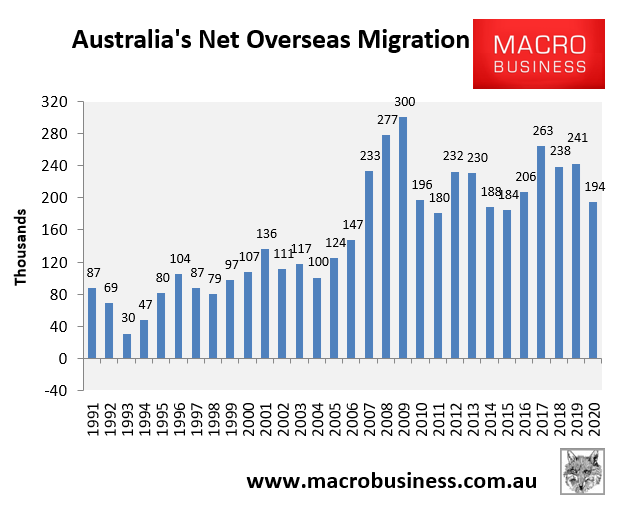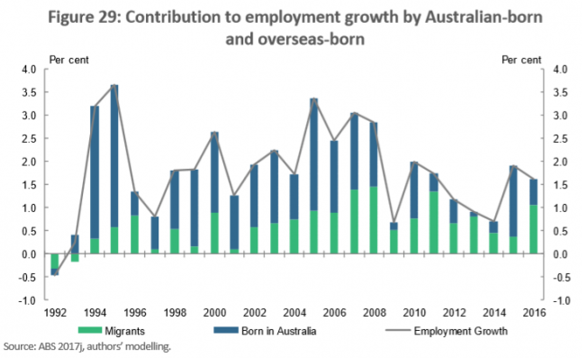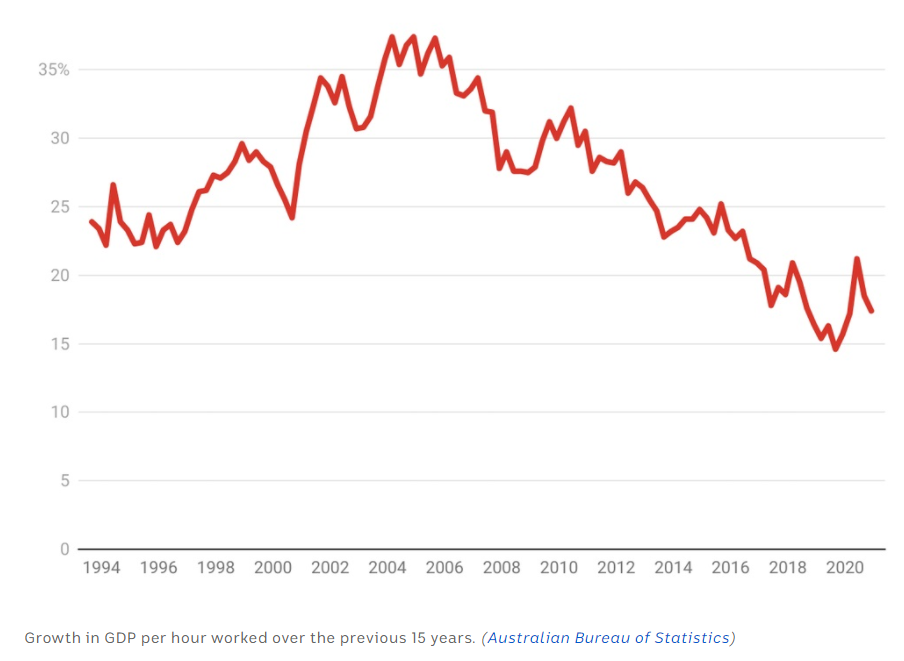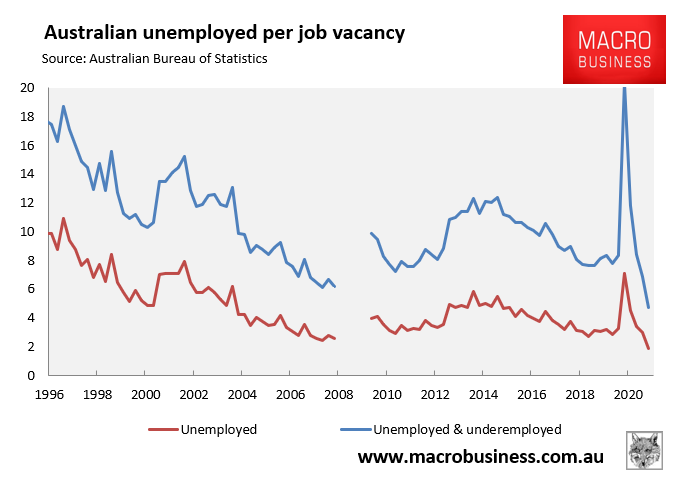For years MB has argued that the massive increase in Australia’s immigration intake from 2005 has played a key role is suppressing that nation’s wage growth.
Australia’s annual net overseas migration (NOM) jumped from an average of 89,000 between 1991 and 2004 to an average of 215,000 between 2005 and 2020 – an annual average increase in immigration of 140%.
This huge increase in migrant workers flooded the labour market, making unemployment higher than it otherwise would have been and wage growth lower.
Even the Australian Treasury’s own propaganda report, entitled Shaping a Nation, explicitly acknowledged that the overwhelming majority of Australian jobs growth went to migrants between 2011 and 2016:
Recent migrants accounted for two-thirds (64.5 per cent) of the approximately 850,000 net jobs created in the past five years. For full-time employment, the impact is even more pronounced, with recent migrants accounting for 72.4 per cent of new jobs created.
The flood of migrant workers also contributed to Australia’s productivity decline since 2005 by congesting our cities, driving up the cost of infrastructure provision, and discouraging firms from adopting labour saving technologies and automation (explained here).
Now that immigration has collapsed, unemployment has suddenly also collapsed to a decade low as employers have been forced to hire Australians. The number of job ads per vacancy has also tightened to levels not seen in around 40 years:
The next stop will inevitably be rising wage growth.
Yesterday, David Alexander – managing director (federal) at government relations firm Barton Deakin – analysed the wages situation from a different angle, expertly explaining how Australian firms use migrant workers from poorer nations to arbitrage lower wages:
- Bipartisan policy over the past two decades has resulted in “the progressive displacement of Australia’s regionally distinct, First World wages model with a regionally merged model”.
- “The traditional First World wages model pursued by Australia has been highly successful, with high wages underpinning strong skills development, a strong equality of opportunity across society and a consequently deep political stability”.
- “One of the consequences of being a high-income country in a low-income region, however, is that powerful incentives exist for entities that wish to arbitrage down the difference. Employers in Australia – government and private sector – will naturally look to reduce wages with lower-priced labour from overseas”.
- “The key pivot point in shifting away from our distinct First World model was the creation of imported labour schemes, starting with the 457 visa in 1996. In a normal market economy, employers pay the market rate to secure workers, the market rate being – by definition – that wage that secures a worker. The key policy change was for government to accept the existence of labour “shortages” when employers declined to offer market rates for labour and found – mirabile dictu! – a lack of applicants”.
- “Why offer the market rate when you can pay less? Firms employing cheaper imported labour now were to enjoy a structural advantage as against those firms employing Australians. Many employers have since built business models based on cheap labour importation”.
- “Governments have created extra visa channels for wage arbitrage with poorer countries to cater for this new demand… Imported labour numbers soared to one of the highest levels in the world pre-pandemic, and many employers are keen to see those numbers resume as soon as normal life resumes”.
- “The pandemic pause temporarily has ended the supply of cheap labour, but when supply resumes the downward pressure on wages is likely to continue for a long time: shortages can be deemed to exist while ever there is a cheaper supply of labour anywhere in the world. It’s quite conceivable that policymakers will continue to puzzle over stagnating Australian wages and grumpy battlers while enthusing about labour import programs, happy business owners and the increased gross size of our economy”.
- “The most obvious losers under the new “regionally merging” labour model are native Australian workers”.
- “The solution to these problems is not complicated: return to the tried and tested regionally distinct, First World wages model. Recognise the costs of merging labour markets with poorer countries. Returning to these basic principles will best enable us to maximise economic efficiency and retain our standing as a First World country”.
This is a perfect explanation of the chicanery that took place via Australia’s mass immigration program, which was basically Work Choices 2.0 by stealth.
If the pre-COVID level of migration is restored, an extra ~180,000 workers would enter the Australian labour market every year. This would necessarily lower worker bargaining power, drive up unemployment and put downward pressure on wage growth. It is basic economics.
One can only wonder why this policy is supported by the useful idiots on the left, such as Greg Jericho. Aren’t they supposed to stand for the working class?





